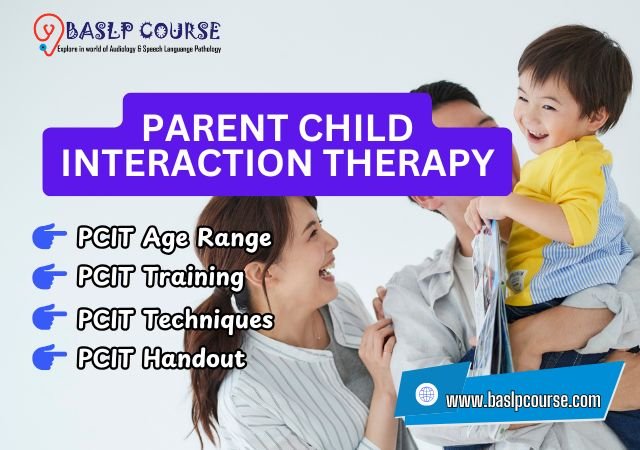
Van Riper Traditional Articulation Therapy: Traditional articulation therapy is a structured and effective approach to address speech disorders. Through accurate assessment, personalized goals, consistent practice, and family involvement, individuals can overcome articulation challenges and unlock clear and confident communication. The traditional method moves from the speaker identifying incorrect productions in ear training to the formation of proper productions, then moves on to generalization, and ultimately moves on to maintenance.
During the first few decades of the 20th century, pioneering articulation therapy clinicians developed the conventional technique. Speech Correction: Principles and Methods, first published in 1939 and revised in many later editions, is a treatise written by Charles Van Riper that summarizes his treatment strategies for articulation abnormalities by the late 1930s. Some refer to the conventional way as the Van Riper method because it developed from his works.
Characteristics of Van Riper Traditional Articulation Therapy
Traditional articulation therapy is characterized by the order of its sensory-perceptual training activities:
- Sensory-perceptual training, which concentrates on identifying the standard sound and discriminating it from its error through scanning and comparing
- Varying and correcting the various productions of the sound until it is produced correctly
- Strengthening and stabilizing the correct production
- Transferring the new speech skill to everyday communication. Typically, the standard sound is processed separately first, followed by syllables, words, and eventually sentences.
This method’s emphasis on perceptual or ear training, which was first thought to be a required prerequisite to production training, is one of its distinguishing features. Production training, which focuses on assisting a client in learning to make a sound on demand, is the next and, in most cases, the main component of traditional instruction.
This traditional approach is based on the idea that by the time the client seeks assistance, his articulation errors have become so set, reinforced, and automatized that he is unable to both recognize them and generate the appropriate phonemes. Furthermore, it appeared to be wiser to teach him the new sound initially in isolation or in fictitious syllables rather than in words for the same reason. Additionally, we understood that if a client could create the right sound once, it would be vulnerable and need to be strengthened if it were to prevail in the competition, using an error with a lengthy history of usage.
Levels of Operations for Traditional Articulation Therapy
Four sequential levels can be used to describe the acquisition of a new sound such that it can be employed in all forms of speech:
- the isolated sound level,
- the sound in a syllable,
- the sound in a word, and
- the sound in a meaningful phrase.
Our patients have to climb this staircase. They discover a large platform at the top of this stairway, where they must use the newly learned sound to explore the communication, cognitive, social control, and egocentric purposes of speaking.
Traditional Articulation Therapy Steps
It is also known as Traditional Production Training (Secord, 1989; Van Riper and Erickson, 1996).

Van Riper Traditional Articulation Therapy Steps
Isolation
The first stage in the conventional approach is to educate the client on how to make a sound alone, or in isolation. Starting with the production of the goal sound alone can be explained by the idea that articulatory motions are easiest to learn when a sound is immediately recognizable and in a simple environment. At this level, the objective is to produce a consistent right answer. It should be noted that training should start at whatever degree of sound complexity a youngster can create, whether it be sound clusters, isolated sounds, syllables, or words.
Nonsense syllables
The client is instructed to make a sound within a syllable in the second phase. At this stage, the objective is to consistently produce the correct sounds in a variety of nonsense-syllable settings. Syllable practice is advised in the following order: CV, VC, VCV, and CVC. It is also recommended that similar sounds be used in place of articulation to make the change from a consonant to a vowel. For instance, the alveolar consonant /s/ should be made easier in words with high front vowels, such as [si]. The therapist may also want to use nonsense clusters with the target sound.
Words
In the third phase, a client is asked to make a sound in meaningful units, or words. Once the client can reliably make the target sound in nonsensical syllables, this stage can start. If the lesson is emphasizing consonants rather than vowels, it should start with monosyllabic words with the target consonant in the prevocalic position (CV). Following that, instruction shifts to more difficult word structures including VC, CVC, CVCV, and monosyllabic words with clusters.
Phrases
The focus of instruction changes from single-word productions to rehearsing a target sound in two- to four-word phrases after the client can effortlessly create the sound in words. In phrase-level productions, one should start with phrases in which the target sound appears in just one word. The therapist may want to insert a second word into the phrase once the client makes the desired sound in a single syllable.
Sentences
Sentence-level practice is an extension of phrase-level output. This principle still applies at this level, just as it has in previous levels of practice where task complexity has been sequenced. It is important to take into account elements including the sentence’s word count, syllable structure, and phonetic context.
It is recommended that the sentence levels go in the following order:
- Simple statement that contains only one occurrence of the desired sound
- Longer and shorter sentences that contain just one occurrence of the target sound
- Brief simple sentences that contain two or more occurrences of the target sound
- Longer or shorter sentences that contain two or more occurrences of the target sound
Conversation: In the final stage of production training, a target sound is used in regular speech. The clinician’s current objective is to encourage generalization of productions that have already advanced through more structured production activities. In the beginning, generalization scenarios are set up so that the client makes their sound correctly in scenarios where speech is being monitored.
Summary of Van Riper Traditional Articulation Therapy
Background Statement
The following are some of the basic presumptions of the conventional remediation approach: Speech sound faults can be considered as poor motor generation of speech sounds in some cases and faulty perception of speech sounds in other cases. Consequently, the traditional method significantly emphasizes motor production practice along with perceptual training exercises.
Unique Features
The traditional way of correcting speech sound defects was the primary methodology utilized by the majority of physicians up until the 1980s and is still commonly applied today (see Brumbaugh and Smit, 2013). The conventional approach emphasizes motor acquisition of specific speech sounds and offers a comprehensive teaching sequence for articulatory fault correction. It can be adjusted to meet the requirements of customers of all ages. Perceptual training is recommended as a precursor to or an accompaniment of direct work on sounds.
Limitations and Strengths
This strategy has been applied widely over time and serves as the foundation for many modern therapeutic strategies. Its broad use is probably due to the method’s adaptability and application, the logical order of the training exercises, and the success that results from motor practice.
Its broad use is probably due to the method’s adaptability and application, the logical order of the training exercises, and the success that results from motor practice. It has been suggested that perceptual training should not be employed on a regular basis after studies that cast doubt on its usefulness. However, there is some evidence to support its usage where a known perceptual issue exists.
Research Support
Due to the fact that it “worked” for numerous physicians with numerous clients, this strategy has endured the test of time and is still extensively employed. Numerous researchers have noted phonological changes in connection with interventions built on this methodology. This is demonstrated by two relatively advanced published research. Notably, taped stimuli rather than live voice presentations were used in both instances to train perception.
Rvachew (1994) employed concurrent perceptual training and conventional therapy with three groups of kids in a randomized control experiment (evidence level Ib). While group 3 (with 8 children) performed discrimination tests using a non-minimal word pair (shoe vs. Pete), groups 1 and 2 (each with 10 and 9 children) used minimal pairs (correct vs. distorted versions of the // in shoe or correct vs. another phoneme).
Frequently Asked Questions about Traditional Articulation Therapy
What is Van Riper Traditional Articulation Therapy?
- Van Riper Traditional Articulation Therapy is a structured and effective approach to addressing speech disorders. It involves sensory-perceptual training, production training, and generalization steps to help individuals overcome articulation challenges.
How does sensory-perceptual training work in Traditional Articulation Therapy?
- Sensory-perceptual training focuses on identifying the standard sound and discriminating it from errors through scanning and comparing. It plays a crucial role in the early stages of the therapy.
What are the levels of operations in Traditional Articulation Therapy?
- There are four levels: isolated sound, sound in a syllable, sound in a word, and sound in a meaningful phrase. Patients progress through these levels to use the newly learned sound in everyday communication.
What are the steps involved in Traditional Articulation Therapy?
- The therapy involves stages such as isolation (learning to make a sound alone), nonsense syllables, words, phrases, sentences, and finally, conversation. Each step is designed to build on the previous one.
Why does Traditional Articulation Therapy start with isolated sound production?
- Starting with isolated sound production is based on the idea that articulatory motions are easiest to learn when a sound is immediately recognizable and in a simple environment.
How is perceptual training incorporated into Traditional Articulation Therapy?
- Perceptual training is emphasized as a precursor to or an accompaniment of direct work on sounds. It helps individuals recognize and discriminate correct sounds from errors.
Is Traditional Articulation Therapy suitable for all age groups?
- Yes, the therapy can be adjusted to meet the requirements of individuals of all ages. It provides a comprehensive teaching sequence for articulatory fault correction.
What are the unique features of Van Riper Traditional Articulation Therapy?
- The traditional approach emphasizes motor acquisition of specific speech sounds and has been widely used since the 1980s. It is adaptable, follows a logical order of training exercises, and combines motor practice with perceptual training.
Are there any limitations to Traditional Articulation Therapy?
- While widely used, there is some debate about the ongoing use of perceptual training. Studies have cast doubt on its usefulness, but evidence suggests its efficacy in cases where a known perceptual issue exists.
Is there research support for Van Riper Traditional Articulation Therapy?
- Yes, the therapy has endured the test of time and is supported by research. Studies have shown phonological changes associated with interventions based on this methodology, demonstrating its effectiveness in addressing speech disorders.
References:
- SPEECH CORRECTION An Introduction to Speech Pathology and Audiology 9th Edition Charles Van Riper [Book]
- Articulation and Phonological disorder Speech Sound Disorders in Children 8th Edition – John E Bernthal [Book]
- Assessment in Speech Language Pathology A Resource Manual 5th Edition, Kenneth G. Shipley, Julie G. McAfee [Book]
- Manual on Developing Communication Skill in Mentally Retarded Persons T.A. Subba Rao [Book]







0 Comments